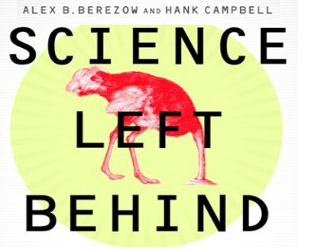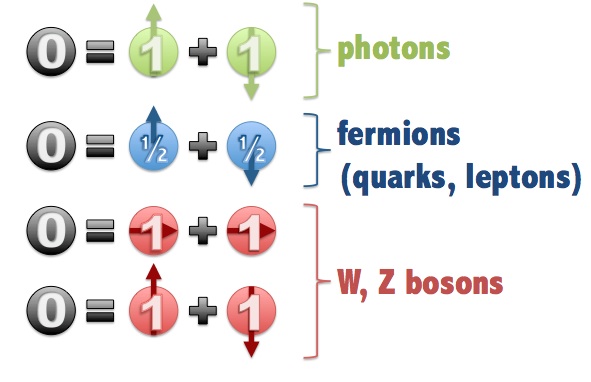Interactions.org Newsdigest 28 April 2009
Updated: 2012-08-31 21:47:43
-- Antimatter mysteries 2: How do you make antimatter? -- The great data explosion -- Big Bang machine detectors will be 'even more perfect' -- Particle physics study finds new data for extra Z-bosons and potential fifth force of nature -- That Other Theory - Loop Quantum Gravity -- Officials to break ground on cutting-edge international physics lab in Northern Minnesota

 Has died at age 82. Perhaps to honor his memory we can resolve as a society to continue to do inspiring things.
Has died at age 82. Perhaps to honor his memory we can resolve as a society to continue to do inspiring things. Via the endlessly enjoyable It’s Okay to Be Smart, here’s a gif image that zooms in by about three orders of magnitude. (Not sure of the original source.) We start by looking at an amphipod, a tiny shrimplike critter about a millimeter across. For some reason (vanity?) it’s decorated by an even tinier diatom, a [...]
Via the endlessly enjoyable It’s Okay to Be Smart, here’s a gif image that zooms in by about three orders of magnitude. (Not sure of the original source.) We start by looking at an amphipod, a tiny shrimplike critter about a millimeter across. For some reason (vanity?) it’s decorated by an even tinier diatom, a [...] Ø Ø Ø FAQ Register Now Sign In Full Site Physical Sciences Earth Sciences Life Sciences Medicine Social Sciences Culture Newsletter HOME PHYSICAL SCIENCES PHYSICS SPACE CHEMISTRY APPLIED PHYSICS AEROSPACE OPTICS EARTH SCIENCES ENVIRONMENT ENERGY ATMOSPHERIC PALEONTOLOGY GEOLOGY OCEANOGRAPHY LIFE SCIENCES GENETICS MOLECULAR BIOLOGY EVOLUTION MICROBIOLOGY ECOLOGY ZOOLOGY IMMUNOLOGY NEUROSCIENCE MEDICINE CANCER RESEARCH PUBLIC HEALTH PHARMACOLOGY CLINICAL RESEARCH AGING VISION SOCIAL SCIENCES ANTHROPOLOGY ARCHAEOLOGY PSYCHOLOGY SCIENCE EDUCATION POLICY SCIENCE HISTORY PHILOSOPHY ETHICS CULTURE TECHNOLOGY MATHEMATICS SCIENCE SOCIETY SPORTS SCIENCE RANDOM THOUGHTS HUMOR VIDEO CONTRIBUTORS Subscribe to the newsletter x Stay in touch with the scientific world Home Physical Sciences Physics A
Ø Ø Ø FAQ Register Now Sign In Full Site Physical Sciences Earth Sciences Life Sciences Medicine Social Sciences Culture Newsletter HOME PHYSICAL SCIENCES PHYSICS SPACE CHEMISTRY APPLIED PHYSICS AEROSPACE OPTICS EARTH SCIENCES ENVIRONMENT ENERGY ATMOSPHERIC PALEONTOLOGY GEOLOGY OCEANOGRAPHY LIFE SCIENCES GENETICS MOLECULAR BIOLOGY EVOLUTION MICROBIOLOGY ECOLOGY ZOOLOGY IMMUNOLOGY NEUROSCIENCE MEDICINE CANCER RESEARCH PUBLIC HEALTH PHARMACOLOGY CLINICAL RESEARCH AGING VISION SOCIAL SCIENCES ANTHROPOLOGY ARCHAEOLOGY PSYCHOLOGY SCIENCE EDUCATION POLICY SCIENCE HISTORY PHILOSOPHY ETHICS CULTURE TECHNOLOGY MATHEMATICS SCIENCE SOCIETY SPORTS SCIENCE RANDOM THOUGHTS HUMOR VIDEO CONTRIBUTORS Subscribe to the newsletter x Stay in touch with the scientific world Home Physical Sciences Physics A Opening panels of a wordless and moving story about a young Space Invader. Worth a click. Via Zack Stentz.
Opening panels of a wordless and moving story about a young Space Invader. Worth a click. Via Zack Stentz. The one thing you forgot to mention, the most important thing as far as I'm concerned, is the possibility that dark matter does not exist at all. It could be nothing but a by-product of our means of detecting it. Remember that the only reason we have right now to believe that it exists at all is gravitational lensing. If gravity has some secrets we don't yet know, such as repulsion at long dist. . .
The one thing you forgot to mention, the most important thing as far as I'm concerned, is the possibility that dark matter does not exist at all. It could be nothing but a by-product of our means of detecting it. Remember that the only reason we have right now to believe that it exists at all is gravitational lensing. If gravity has some secrets we don't yet know, such as repulsion at long dist. . .
 We were all transfixed by the Higgs seminars on July 4, but the work was nowhere near over for the experimentalists — they had to actually write up papers describing the results. And of course taking the opportunity to do a little more analysis along the way. Now the papers have appeared on the arxiv. [...]
We were all transfixed by the Higgs seminars on July 4, but the work was nowhere near over for the experimentalists — they had to actually write up papers describing the results. And of course taking the opportunity to do a little more analysis along the way. Now the papers have appeared on the arxiv. [...] Quantum Diaries Thoughts on work and life from particle physicists from around the . world Home About Quantum Diaries Latest Posts All Blogs John Felde UC Davis USA View Blog Read Bio Latest Posts 2012.03.05 Fast Photosensors for Neutrino Physics 2011.11.22 Recent Events at UC Davis 2011.11.09 First Double Chooz Neutrino Oscillation Result USLHC USLHC USA View Blog Read Bio Latest Posts 2012.08.30 What Goes on My Research Page 2012.08.26 Testing theory 2012.08.16 How a calorimeter works part 3 Frank Simon MPI for Physics Germany View Blog Read Bio Latest Posts 2012.07.04 Plus Two 2011.12.14 After the talk is before the talk 2011.10.24 Breathe Flip Tanedo USLHC USA View Blog Read Bio Latest Posts 2012.07.19 The Post-Higgs Hangover : where’s the new physics 2012.07.06 More Post-Higgs
Quantum Diaries Thoughts on work and life from particle physicists from around the . world Home About Quantum Diaries Latest Posts All Blogs John Felde UC Davis USA View Blog Read Bio Latest Posts 2012.03.05 Fast Photosensors for Neutrino Physics 2011.11.22 Recent Events at UC Davis 2011.11.09 First Double Chooz Neutrino Oscillation Result USLHC USLHC USA View Blog Read Bio Latest Posts 2012.08.30 What Goes on My Research Page 2012.08.26 Testing theory 2012.08.16 How a calorimeter works part 3 Frank Simon MPI for Physics Germany View Blog Read Bio Latest Posts 2012.07.04 Plus Two 2011.12.14 After the talk is before the talk 2011.10.24 Breathe Flip Tanedo USLHC USA View Blog Read Bio Latest Posts 2012.07.19 The Post-Higgs Hangover : where’s the new physics 2012.07.06 More Post-Higgs After a few provocative hints over the last few years, new results in the search for weakly-interacting dark matter have come up empty. The latest is from XENON100, a liquid-xenon scintillation detector under the mountain in Gran Sasso, Italy. Here are the talk slides by Elena Aprile (pdf) from the Dark Attack conference in Switzerland [...]
After a few provocative hints over the last few years, new results in the search for weakly-interacting dark matter have come up empty. The latest is from XENON100, a liquid-xenon scintillation detector under the mountain in Gran Sasso, Italy. Here are the talk slides by Elena Aprile (pdf) from the Dark Attack conference in Switzerland [...] Quantum Diaries Thoughts on work and life from particle physicists from around the . world Home About Quantum Diaries Latest Posts All Blogs John Felde UC Davis USA View Blog Read Bio Latest Posts 2012.03.05 Fast Photosensors for Neutrino Physics 2011.11.22 Recent Events at UC Davis 2011.11.09 First Double Chooz Neutrino Oscillation Result USLHC USLHC USA View Blog Read Bio Latest Posts 2012.08.30 What Goes on My Research Page 2012.08.26 Testing theory 2012.08.16 How a calorimeter works part 3 Frank Simon MPI for Physics Germany View Blog Read Bio Latest Posts 2012.07.04 Plus Two 2011.12.14 After the talk is before the talk 2011.10.24 Breathe Flip Tanedo USLHC USA View Blog Read Bio Latest Posts 2012.07.19 The Post-Higgs Hangover : where’s the new physics 2012.07.06 More Post-Higgs
Quantum Diaries Thoughts on work and life from particle physicists from around the . world Home About Quantum Diaries Latest Posts All Blogs John Felde UC Davis USA View Blog Read Bio Latest Posts 2012.03.05 Fast Photosensors for Neutrino Physics 2011.11.22 Recent Events at UC Davis 2011.11.09 First Double Chooz Neutrino Oscillation Result USLHC USLHC USA View Blog Read Bio Latest Posts 2012.08.30 What Goes on My Research Page 2012.08.26 Testing theory 2012.08.16 How a calorimeter works part 3 Frank Simon MPI for Physics Germany View Blog Read Bio Latest Posts 2012.07.04 Plus Two 2011.12.14 After the talk is before the talk 2011.10.24 Breathe Flip Tanedo USLHC USA View Blog Read Bio Latest Posts 2012.07.19 The Post-Higgs Hangover : where’s the new physics 2012.07.06 More Post-Higgs Higgs the cat, owner of friend and guest author of the blog Faye Flam, has written his own take on the Higgs boson as a contribution to Faye’s Planet of the Apes blog. Faye will shamelessly plagiarize Higgs in Monday’s Philadelphia Inquirer, but you can read it straight from the kitty’s mouth at the above [...]
Higgs the cat, owner of friend and guest author of the blog Faye Flam, has written his own take on the Higgs boson as a contribution to Faye’s Planet of the Apes blog. Faye will shamelessly plagiarize Higgs in Monday’s Philadelphia Inquirer, but you can read it straight from the kitty’s mouth at the above [...]